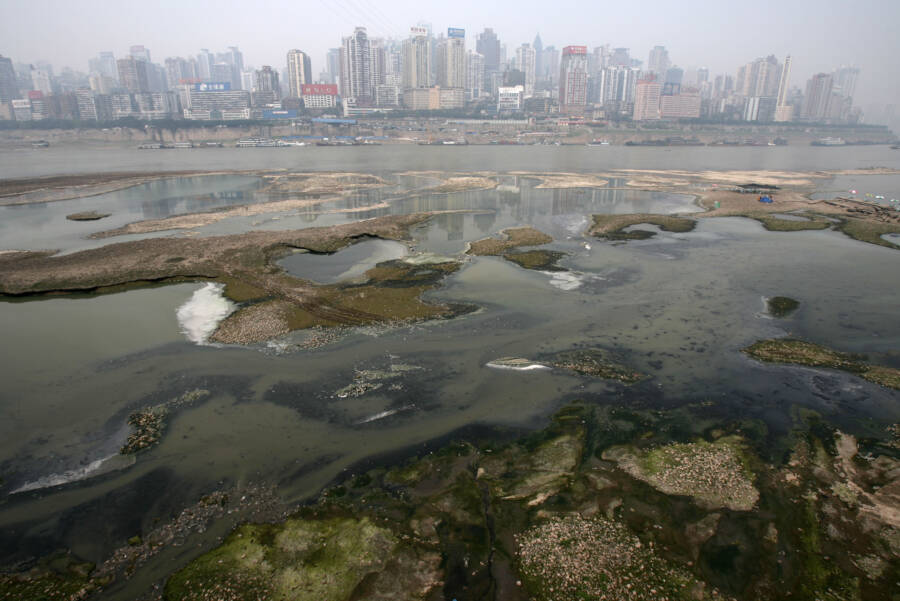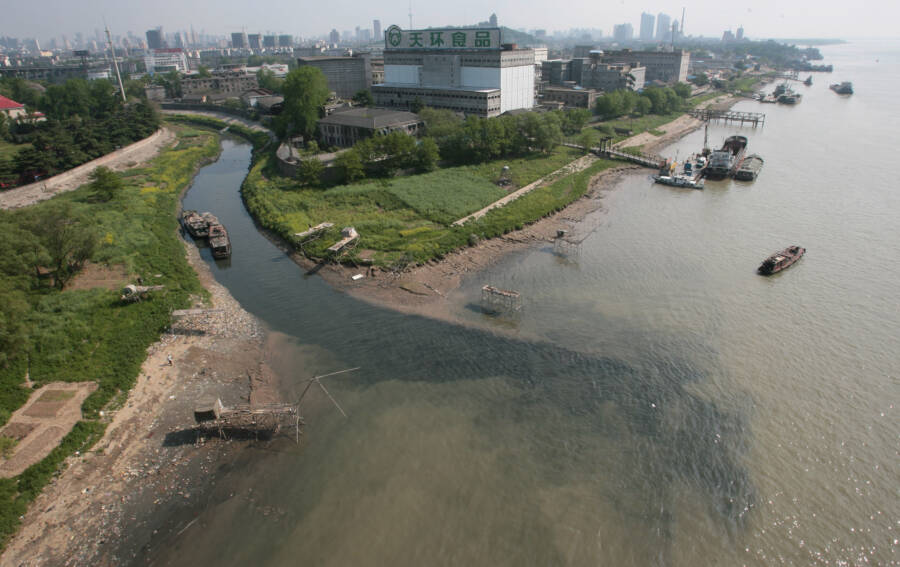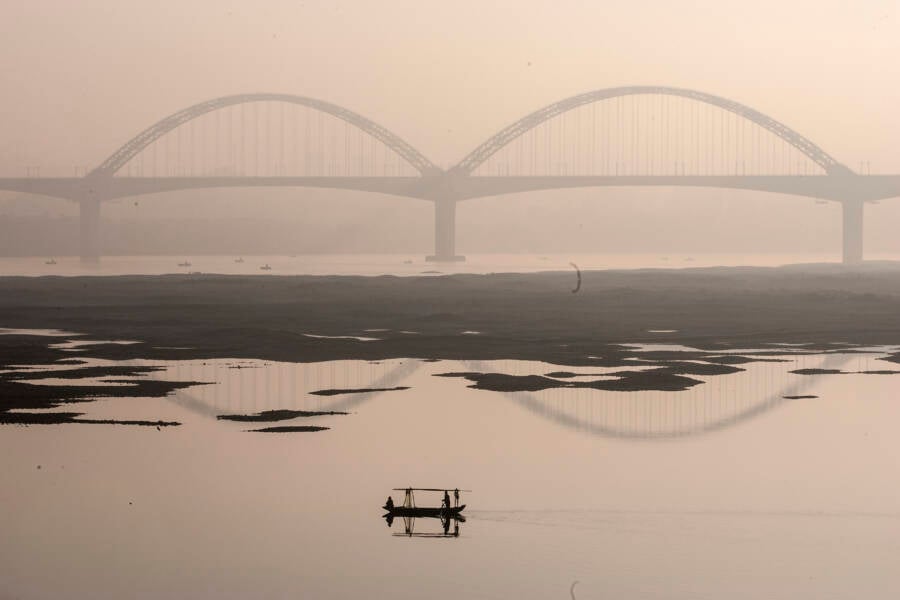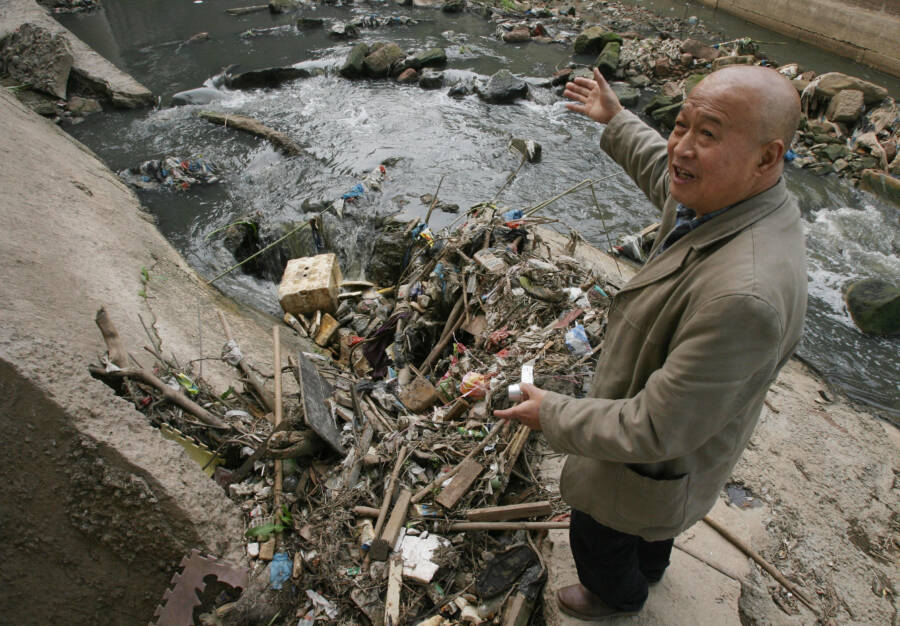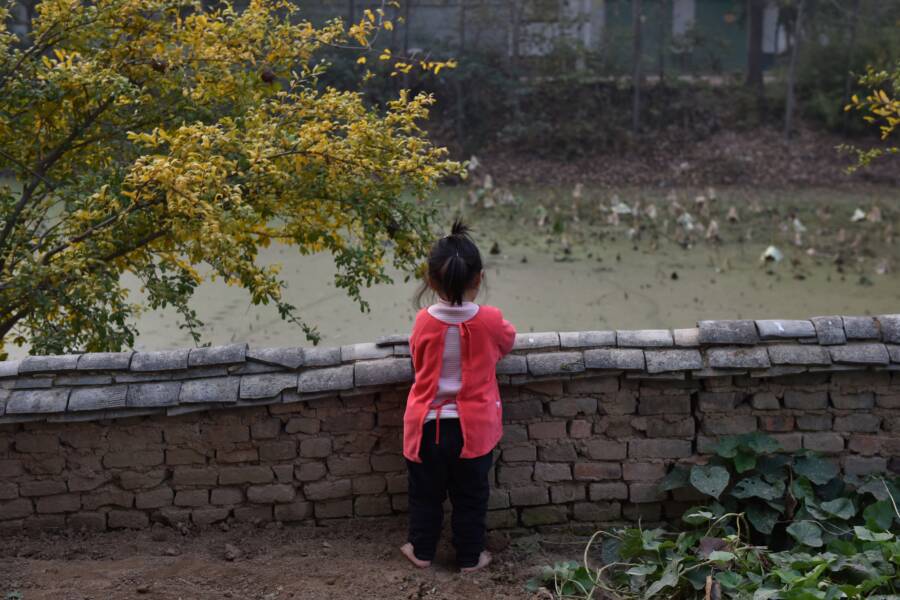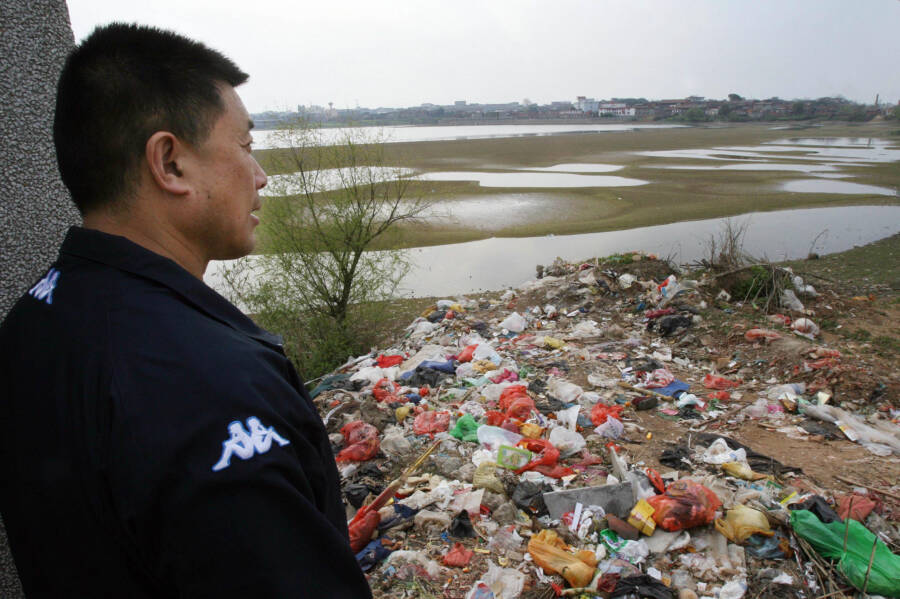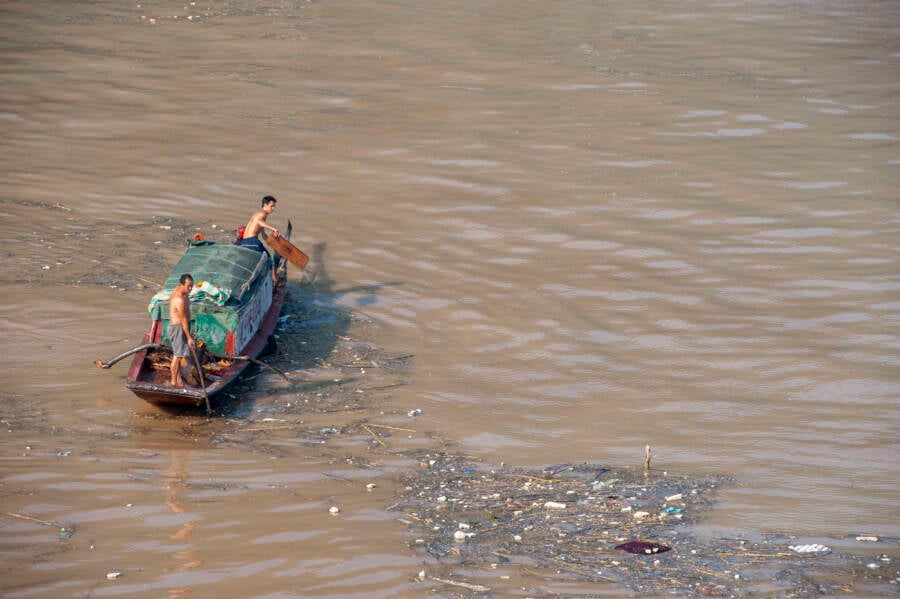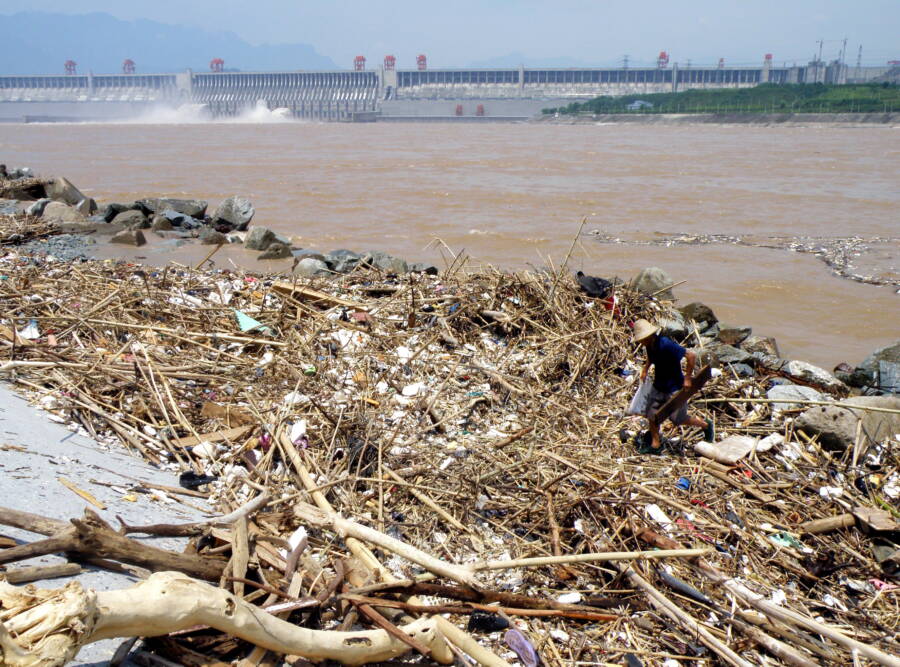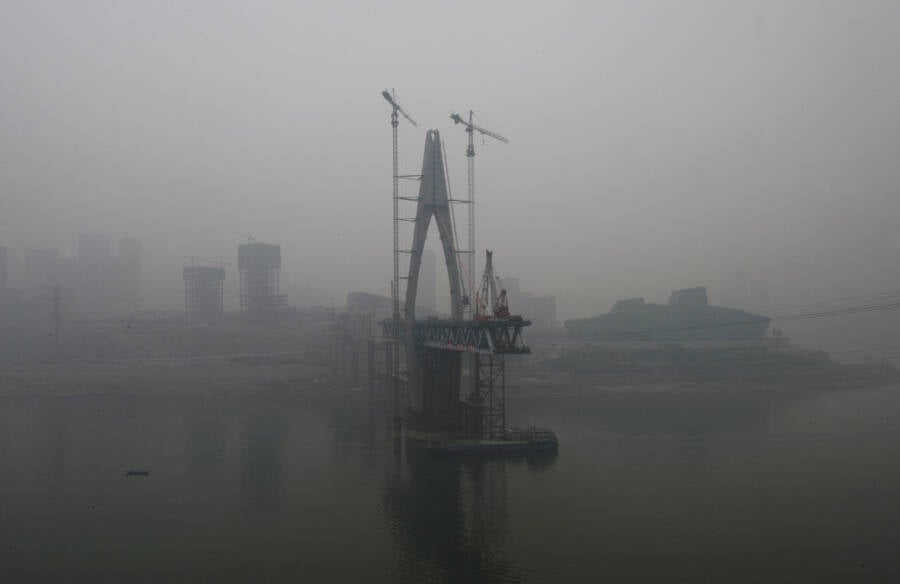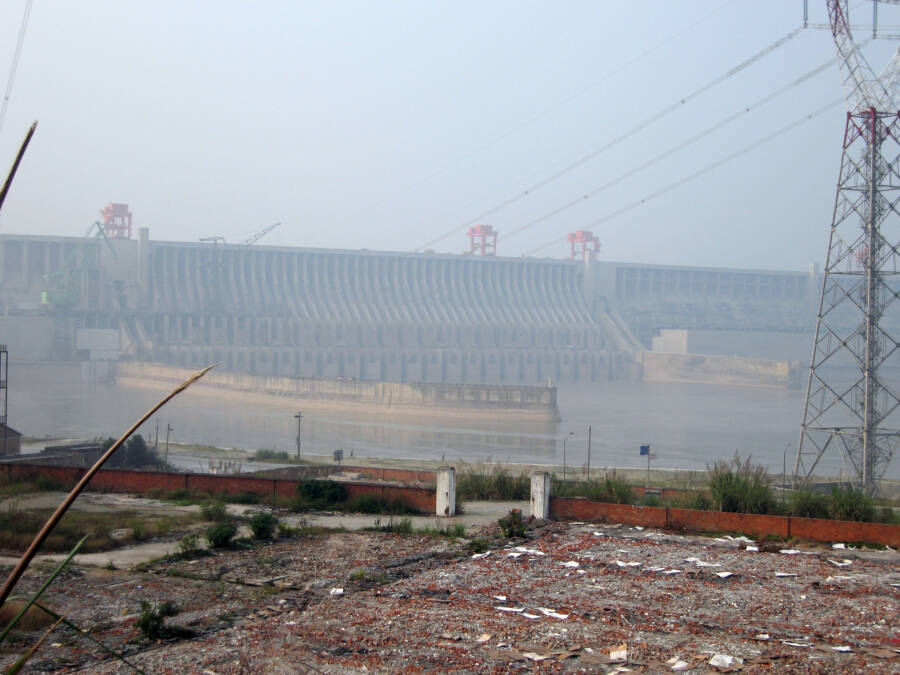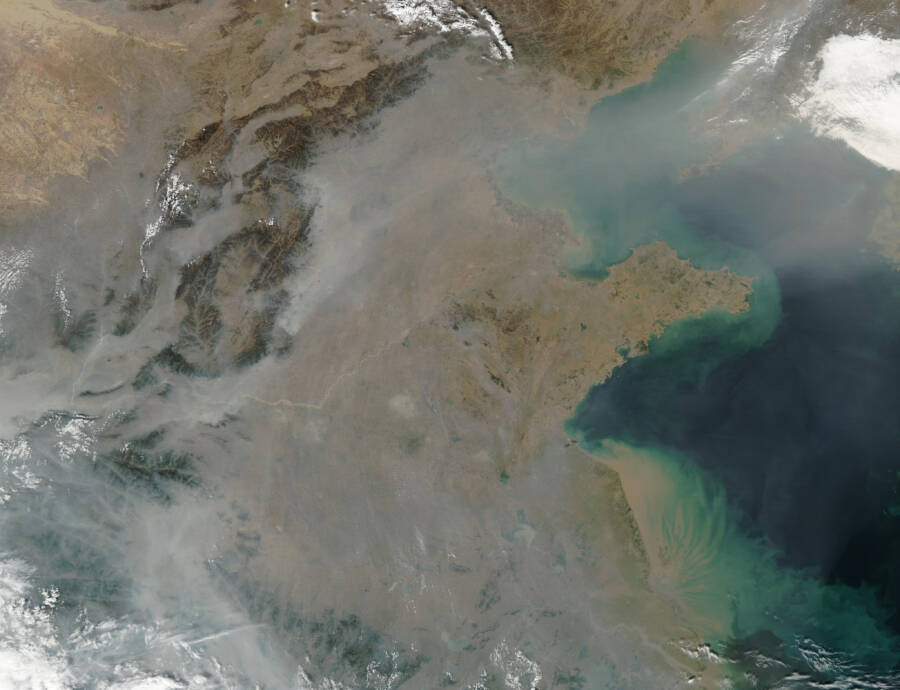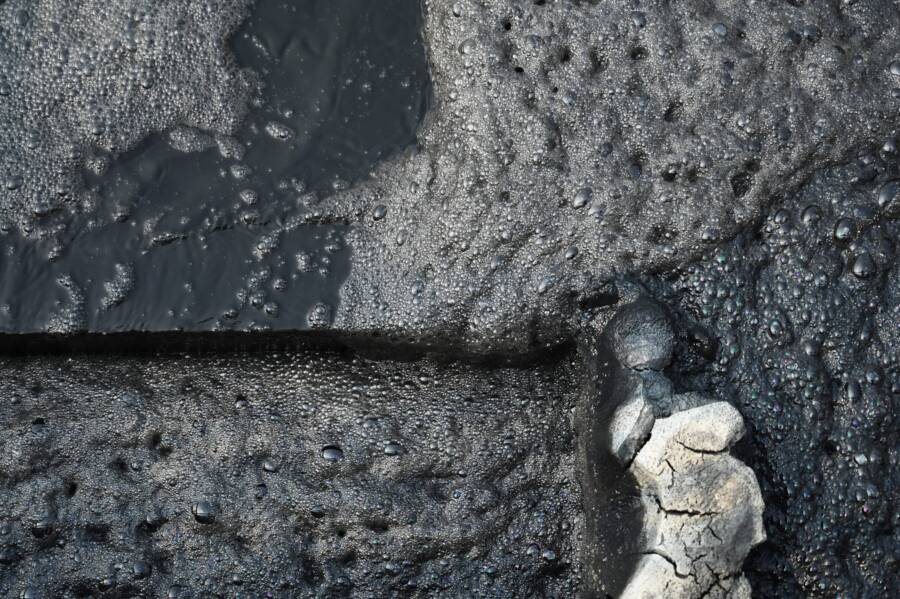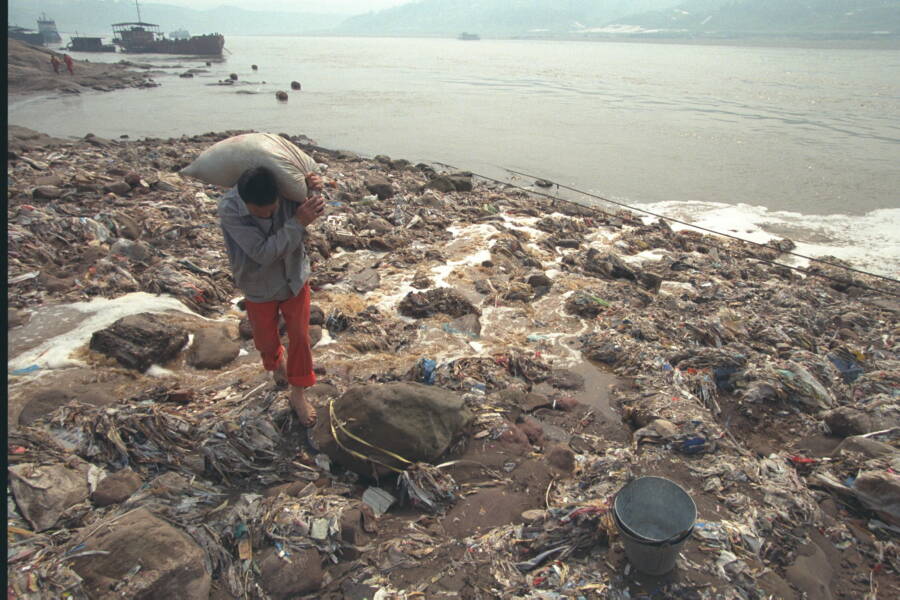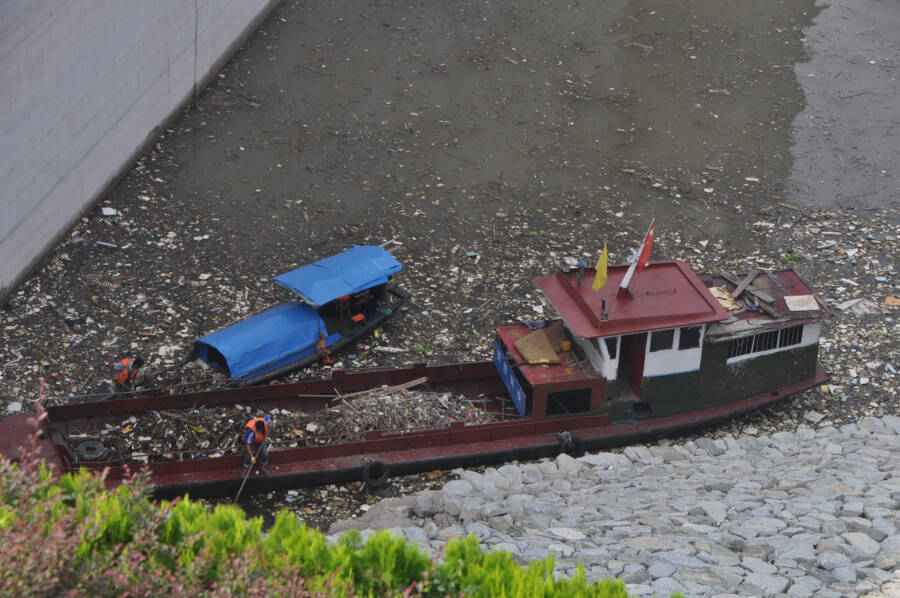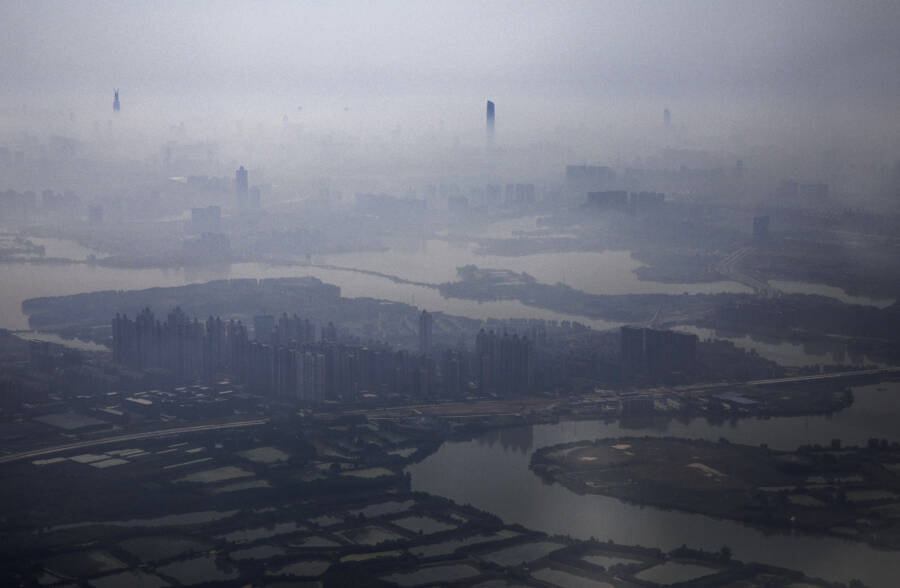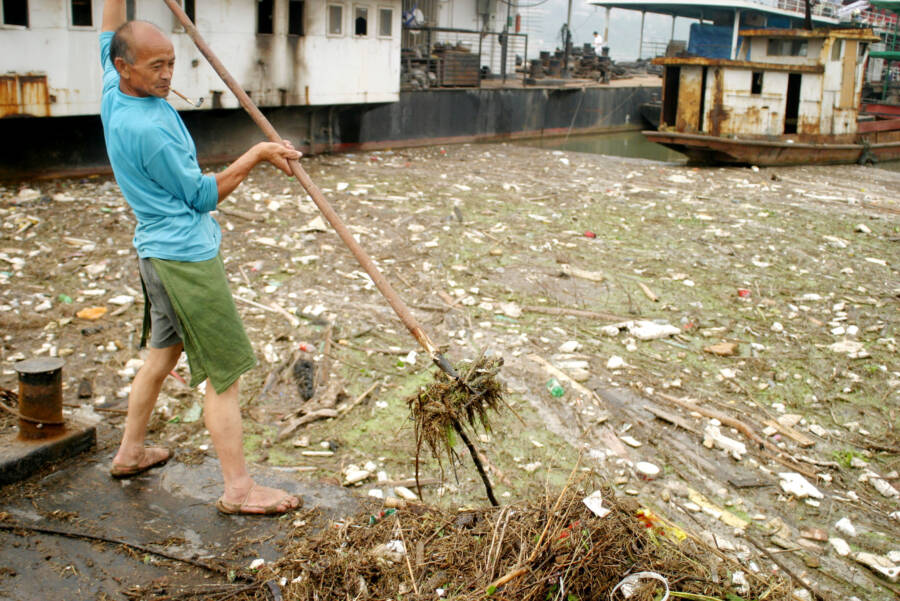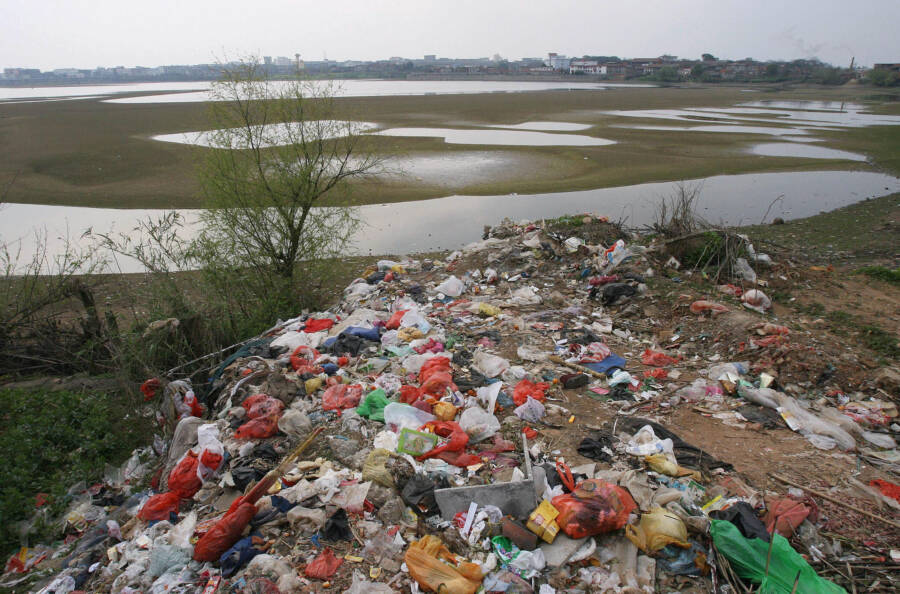China's Yangtze River, the third-longest in the world, is now so polluted that nearly half the people who depend on it are without safe drinking water.
Residents along China's Yangtze River are faced with a deadly choice.
Villagers can either drink its heavily-polluted waters or shoulder the expense of buying bottled water. With that cost often too great and with nearby factories only adding to the pollution, these towns have consequently been branded as "cancer villages," as instances of stomach, throat, and liver-related cancers have affected residents at a rate two to three times China's national average.
The Yangtze is China's largest and the world's third-longest river. It supports over 400 million people and is, unfortunately, perhaps the world's most polluted river accounting for 55 percent of the material that ends up in the adjacent seas and ocean.
This amount of plastic has disastrous consequences for wildlife as well. Animals in the areas surrounding the river have been found with microplastics in their stomachs, slowly killing them.
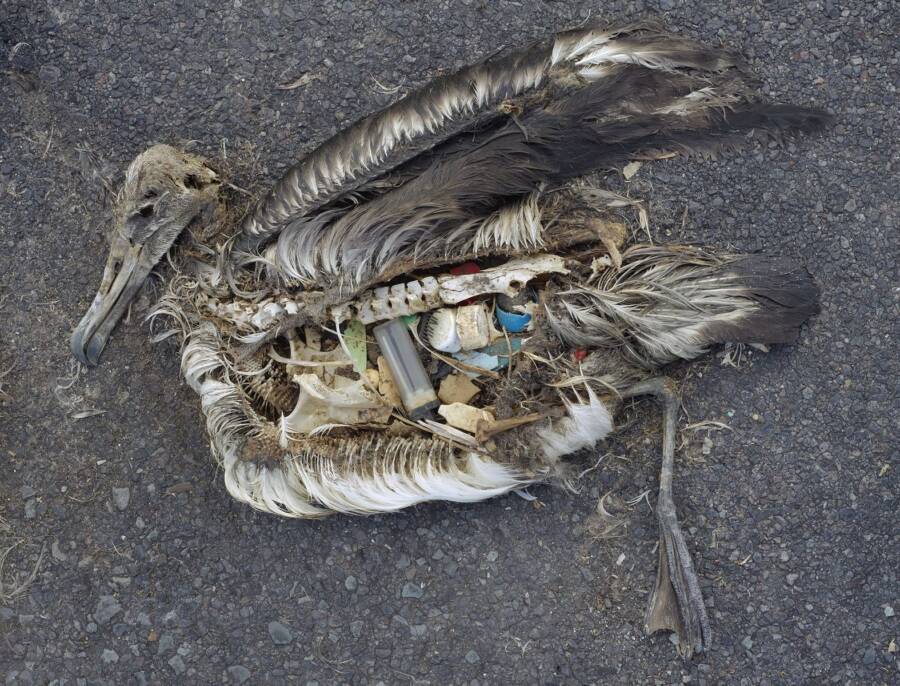
Wikimedia CommonsThe unaltered stomach contents of a dead albatross chick includes plastic marine debris fed the chick by its parents.
The Chinese paddlefish, for instance, are creatures that have alive since the time of the dinosaurs, having survived more than 200 million years of Earth's seismic shifts. But in the last few decades, these living fossils have gone extinct as a result of the pollution in its native habitat.
Indeed, the situation in the Yangtze is so dire that the prehistoric fish which outlived the dinosaurs has been obliterated by man.
China's Struggle With Pollution
On March 4, 2014, Chinese Premier Li Keqiang declared that China would wage war against the smog. By 2017, he asserted, the government planned to convert homes in major cities from coal-burning heat to natural gas in a bid to reduce carbon emissions.
But roughly four decades of booming economic growth has turned China into the world's biggest carbon offender. The government has been trying to eliminate this pollution without damaging its economy.
This is obviously no simple task. In 2015, a research study by Berkeley Earth found that China's air pollution was responsible for 1.6 million deaths per year. That accounts for 17 percent of all the deaths in the country.
There's still a long road ahead for China because while the air is improving, it's still not healthy.
Besides, then there's the whole issue of water pollution.
The Yangtze River Pollution
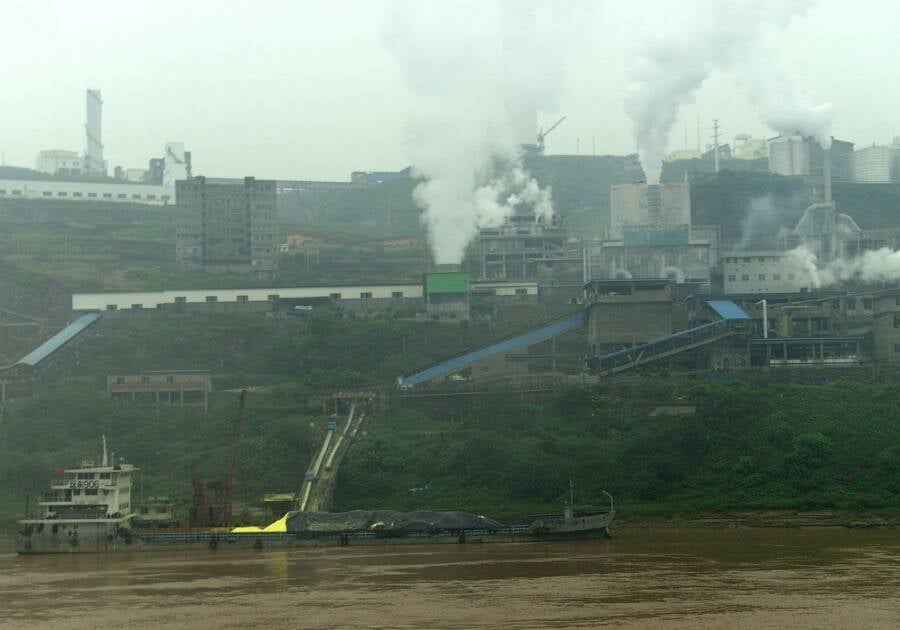
Wikimedia CommonsA factory along the Yangtze River puts residents at further risk of pollution.
Just ten rivers worldwide account for providing 90 percent of the plastic that winds up in the oceans. The Yangtze was reported at one point to be the worst of them, transporting up to 1.5 million metric tons of plastic into the Pacific. In contrast, the Thames carries about 18 tons of plastic.
The Yangtze's rate of pollution is perhaps matched by Indonesia's Citarum River, whose dense pollutants are contained to a smaller area and whose fish population has dropped off nearly 60 percent since 2008.
The Yangtze is vast; fed by roughly 700 tributaries. All of these contribute to the overall level of pollution that eventually bleeds into the Pacific Ocean. This particular travel pattern of pollutants forms what's called the Great Pacific Garbage Patch, (GPGP) or the Pacific trash vortex.
Annually, the Yangtze transports 2.5 billion metric tons of goods, making it also the busiest inland river in the world. China's highly-consumerist lifestyle means its waste management system can't keep up with all the single-use plastics it produces and so these products wind up in the waterways. It's pretty much the same story the world over but if things continue at the current pace, then by 2050, the number of plastics in the ocean will outweigh the amount of fish.
This is the same year that a report finds climate change will reach doomsday proportions.
Problems With The Three Gorges Dam
In addition to the pollution of plastics, the Three Gorges Dam — the world's largest hydroelectric dam — has been damaging the Yangtze since it opened in 2003.
Even before it was built the Chinese government ignored warnings that the proposed dam would become an environmental nightmare that would trigger landslides and potentially damage entire ecosystems. They built it anyway.
Even though the dam lightened the area's output of carbon dioxide, it contributed to close to hundreds of landslides in 2009 and 2010. This is in part because the dam sits on a seismic fault. At current levels, 80 percent of the land in the area is experiencing erosion, depositing about 40 million tons of sediment into the Yangtze annually, which is bad for water quality.
China's Plan To Fight Water Pollution
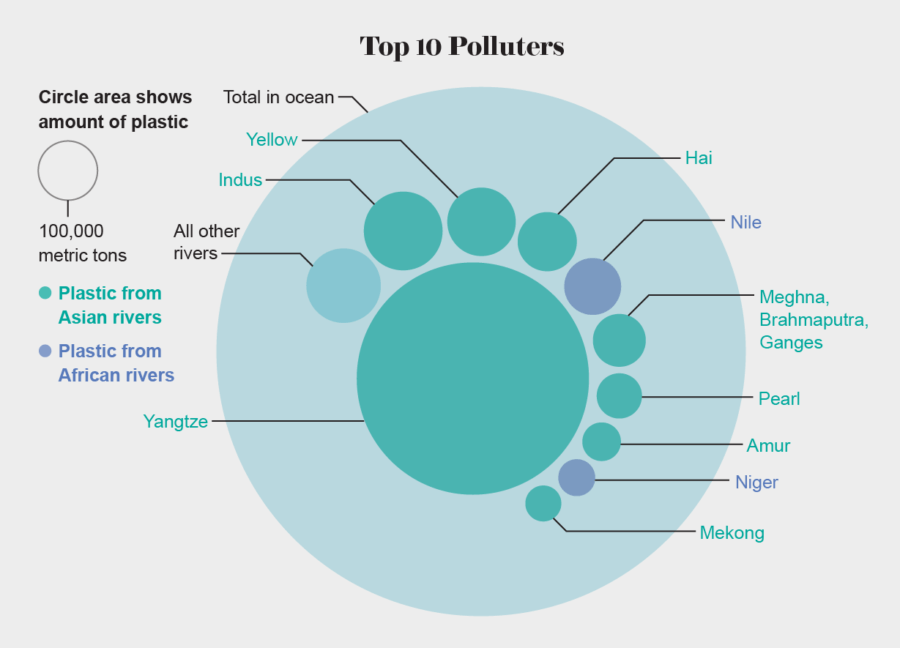
"Export of Plastic Debris by Rivers into the Sea," by Christian Schmidt et al., in Environmental Science & Technology, 2017.
China's government is taking steps to clean up the toxic river along with other waterways.
However, progress — though notable — is slow. The challenges are plentiful; where will all the plastic go, considering an estimated 60 million plastic containers are used daily and many cannot be recycled?
Also, who will be responsible for enforcing new anti-pollution laws? Water carries pollution across boundaries — therefore different jurisdictions would have to cooperate with each other in order to control the problem in any given area.
This issue brought the government in 2016 to appoint various officials across different levels of government to become "river chiefs." Now, more than 300,000 river chiefs span a four-tier system from provincial to township levels.
"Regarding environmental protection, all of the Yangtze's tributaries matter," China's President Xi Jinping says. "so there is more work to do together."
Next, find out why India has a humungous trash pile as high as the Taj Mahal. Then, read about how New York's toxic smog emergency of 1966 claimed the lives of at least 169 people.
